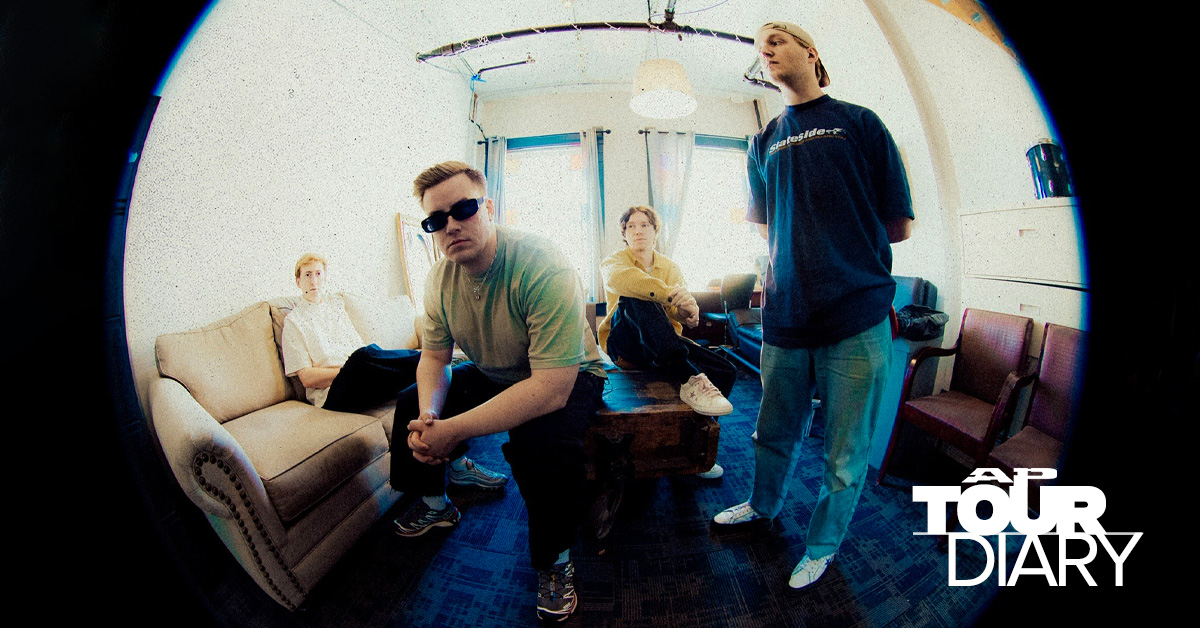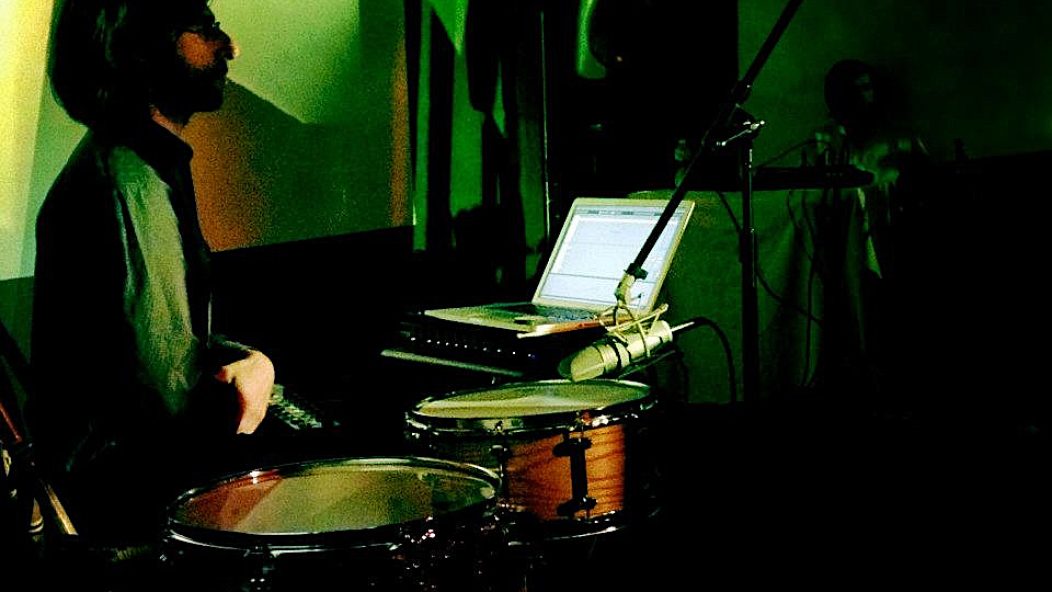
Brian Chase's "Drums & Drones" and the Art of Listening
…
Brian Chase is still learning. He started taking drum lessons at the age of five, encouraged by parents that had already bought him a toy drum set. As he grew up, he split time playing hair-metal tunes with schoolmates and studying jazz and classical percussion. Since the early 2000s, Chase has made his name playing drums for the Brooklyn trio Yeah Yeah Yeahs. Not content to coast on the wave of indie rock success, he has kept busy with avant-garde jazz acts and experimental recordings.
Throughout it all, he has honed his technique, but not in the ways you’d expect. When I asked Chase about his most recent breakthrough on the instrument, he didn’t bring up an elaborate fill or limb-independence exercise. “I’ve learned to listen to the room, to hear the music from the audience’s perspective,” he says.
That skill was essential to the creation of Drums & Drones, a three-album series of experimental music made, appropriately enough, by turning tones made on drums into long, meditative drones. At the beginning of each piece, Chase can be heard striking the drum and steadily honing in on a specific frequency. Gradually, that frequency swells and expands until it becomes an all-encompassing texture. The collection is a remarkable exploration of drums not just as a percussive or even a melodic instrument, but as a tool for ambience. Drums & Drones represents the culmination of a decade of exploration that mirrors Chase’s personal growth as an artist.
…
…
Finding a drum tone capable of creating these kinds of overtones requires a precise ear, but also a technical understanding of drum tuning. Chase first developed a knack for tuning while working for Carroll Music, an instrument rental store in Manhattan that serviced the musicians union and musical theater players. He began to apply his tuning skills to his own playing. While recording Yeah Yeah Yeahs’ second album, 2006’s Show Your Bones, he began tuning his drums to the key of the song. “Luckily, Yeah Yeah Yeahs songs are pretty harmonically related,” he jokes.
Even if this kind of attention to detail flys over the heads over most of his listeners, it sharpened Chase’s ear not just for how his instruments sounded by themselves, but how they sounded in context. Eventually, this narrowing of focus led Chase past the drums themselves and into the frequencies of sound. While working as a monitor for Marian Zazeela’s “Dream House” installation, Chase developed a fascination with the psychoacoustic effects of drone music. Chase decided he would try and replicate the stillness of the Dream House using his own instrument. With this effect in mind, Brian Chase began a long process of trial & error. “I knew where I wanted to go,” Chase says. “But I had to learn how to get there.”
To help guide this process, Chase studied the work of composer La Monte Young, specifically his use of “just intonation.” Compared to our current system of equal temperament, just intonation tunes so that all intervals are mathematically identical. This results in a greater resonance between notes, but also a harsher dissonance that doesn’t typically sound good to modern ears. For Chase’s purposes however, just intonation was perfect. “It made it a numbers game for me,” he explains. “One I tuned the drum to the right pitch, finding the next tone was a matter of math.”
…
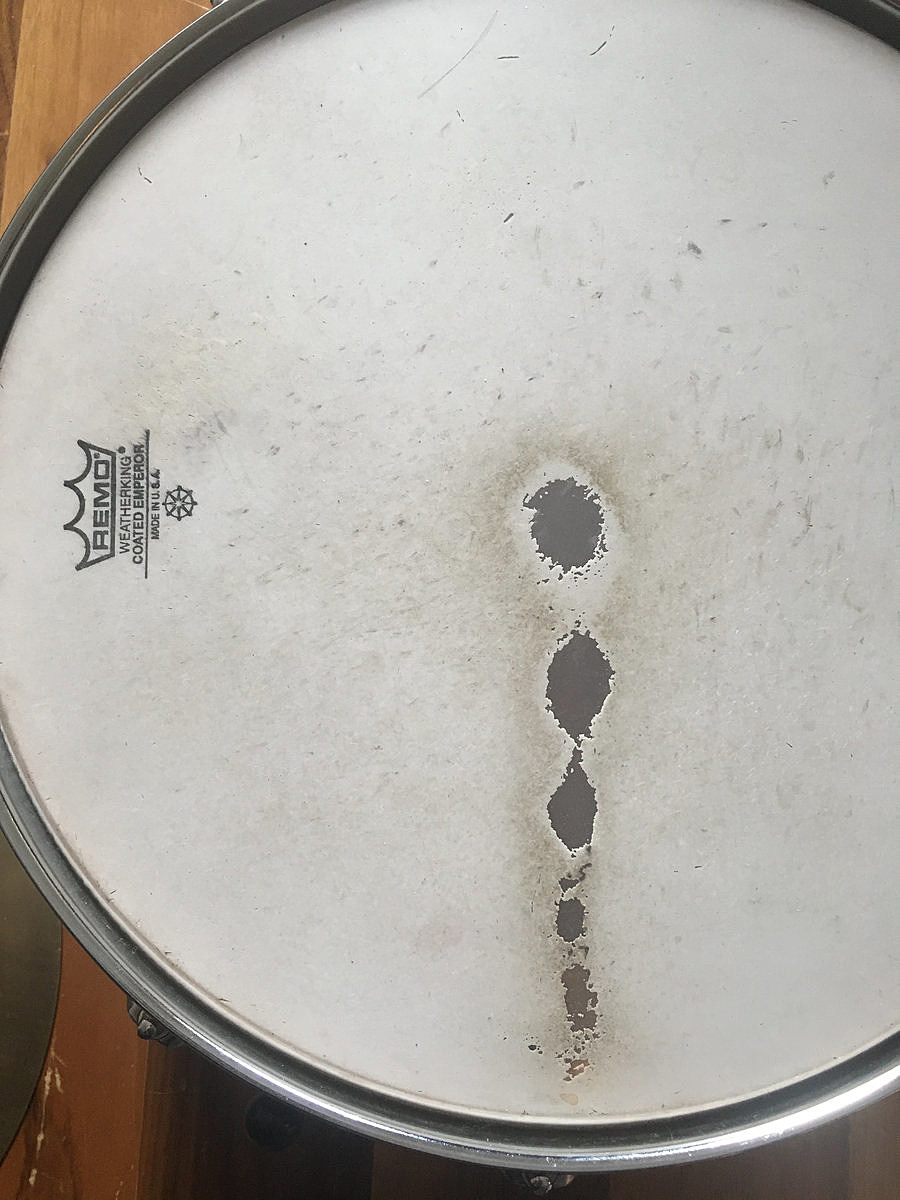
…
The process may have been largely technical, but the effect that the Drum & Drone creates is hard to quantify with numbers alone. On record, the project can recede into the background, but in person the sound is impossible to escape. At the album’s release show at Mercury Lounge, there was a palpable change in the room once Chase began playing. Conversations stopped, and drinks were sipped quietly. Once Chase had pinpointed the frequency he was looking for, he would magnify it until it filled the whole room. The project’s origins in the installation world were immediately apparent. Each piece sounded different in each corner of the room, but even standing in one place would force your ears to explore different nooks and crannies of the drone.
“These aren’t supposed to be songs where one part follows the other,” Chase says. “It’s about creating an appreciation for stillness.”
At their loudest moments, the drones that Chase create can start take on a tactile quality, hitting you in the chest as well as the ears. “It can be physically intense at times, but it’s never meant to be malicious,” he says. Chase is aware that this is a big ask, especially for Yeah Yeah Yeahs fans that aren’t used to the conventions of experimental music. “I think it’s fine if people can only stick with it for 15 minutes,” he acknowledges. “As long as they aren’t rude or disruptive.”
Although Drums & Drones started as a recording project, the live element has been essential to the process. “My methods on the first record were pretty crude,” Chase admits “Playing live helped me figure out what to do for the second album.” In addition to being a learning experience, the live setting also includes an essential visual component. While Chase is fiddling with the sound of his snare drum, projectionist Ursula Sherrer uses the venue as a canvas for a complex lattice of glittering lights and shapes. While both the visual and auditory are fascinating on their own, it can be difficult to connect any thematic dots between the two. This is by design. “When we first started, I would try to synch up with changes in the projections,” Chase says. “But these days we mostly coexist.”
This reveals a key philosophical pillar to Drums & Drones. While Chase is in control of how the tones are manipulated, he’s ultimately at the mercy of the drum itself. Once the drone is established, it takes on a life of its own. For Chase, part of the process is accepting the results at they are. “What will be, will be” is the project’s core ethos. In this way, the Drums & Drones series represents the apex of Chase’s listening skills. Having graduated from listening to his own playing to hearing the whole band, the Drums & Drones albums show Chase learning to listen to the room itself. With each successive level of listening, Chase’s ego takes less and less precedence. Instead of forcing his will over the sound by trying to follow his written instructions exactly, Chase allows the sound itself to tell him what to do. He makes no attempt to hide his methods or shroud the project in mystique. The liner notes for the album’s three-disc set break down his recording process in exacting details. Not only does this help explain how the album’s strange sounds were made, but it puts the ‘how’ on the same level as the ‘who’.
…
…
By making the creative process so transparent, Chase encourages his listeners to adopt the same egoless approach, giving themselves over to the sound and not the mystique of the performer. In the throes of the drone, worries about what will happen next fade away. There is only the now, in all its layered beauty.
…
You can purchase Drums & Drones on Brian Chase’s Chaikin Records, and you can enter the drone-zone in person on the following dates:
July 12th — Washington D.C. — Rhizone
July 14th — Baltimore, MD — Red Room
…
Become an Invisible Oranges patron.
…




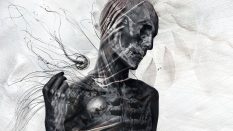

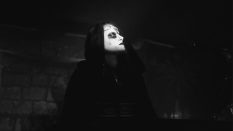

![Bad Omens announce new album CONCRETE JUNGLE [THE OST]](https://www.altpress.com/wp-content/uploads/2024/04/17/BadOmens-CROP_2024_JW_0619_Final_V1.jpg)

